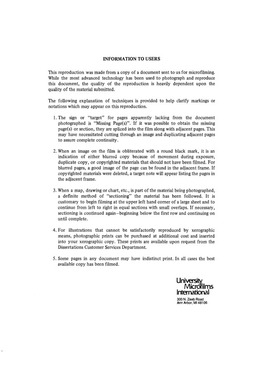| dc.contributor.author | Ettlinger, Nancy, | en_US |
| dc.date.accessioned | 2013-08-16T12:29:16Z | |
| dc.date.available | 2013-08-16T12:29:16Z | |
| dc.date.issued | 1984 | en_US |
| dc.identifier.uri | https://hdl.handle.net/11244/5284 | |
| dc.description.abstract | The underlying contention of this study is that identifications of regional economic change are, to date, unclear. Various research strategies exist that are based on assumptions consistent with different paradigms, resulting in dramatically different interpretations of empirical realities. The various approaches to regional economic change may be classified fundamentally into the "growth" and "development" orientations. The former is highly quantitative, and conclusions about change are reached on the basis of quantitatively assessable indicators; the latter is qualitative, and conclusions about change are based on qualitative observations of system-wide parameters, often considered within a historical context. Each of these orientations offers valuable insights, but qualitative and quantitative observations typically are treated as being analytically mutually exclusive. | en_US |
| dc.description.abstract | This study considers that regional economic change includes a broad set of phenomena and that the types of observations common to the growth and development orientations both represent pertinent ramifications of regional economic change. An alternative conceptualization of change is proposed that integrates qualitative and quantitative considerations. For example, employment numbers--a conventional growth indicator--are considered together with types of labor with respect to skill and technological levels. Also, labor is qualified by sectors, so that long-term sectoral changes (e.g. changes in a region from an industrial to a post-industrial economy) are accounted for. A regional index is then developed, whereby a region is defined in terms of a set of independent variables that represent an integration of qualitative and quantitative observations. Regions are assigned values that can be examined over time in terms of both absolute and relative change. The distinction and identification of these two types of change are critical because much of the disagreement about empirical realities stems from a confusion of these types of change. The concepts, methodology, and classification of regional economic changes are then given empirical content with respect to the United States' four Census Regions and nine Census Divisions, 1962-1980. Finally, a discriminant analysis is performed to assess the different contributions of the independent variables to regional differentiation in the United States in the last two decades. | en_US |
| dc.format.extent | vii, 233 leaves : | en_US |
| dc.subject | Geography. | en_US |
| dc.title | Towards a clarification of regional economic change : | en_US |
| dc.type | Thesis | en_US |
| dc.thesis.degree | Ph.D. | en_US |
| dc.thesis.degreeDiscipline | Department of Geography and Environmental Sustainability | en_US |
| dc.note | Source: Dissertation Abstracts International, Volume: 45-08, Section: A, page: 2618. | en_US |
| ou.identifier | (UMI)AAI8425537 | en_US |
| ou.group | College of Atmospheric & Geographic Sciences::Department of Geography and Environmental Sustainability | |
